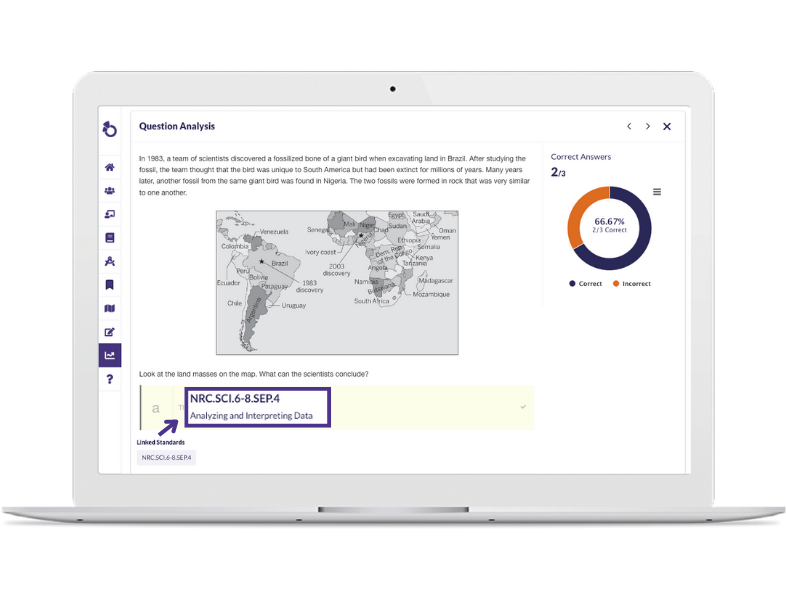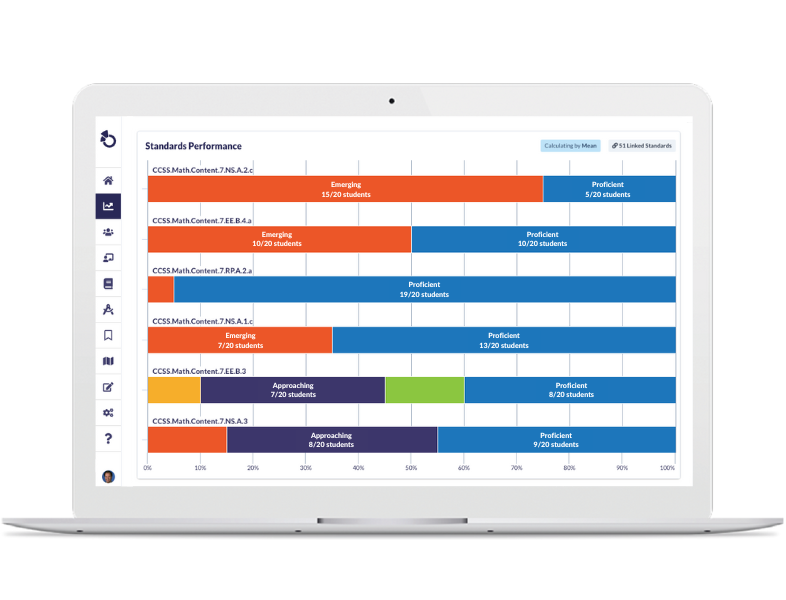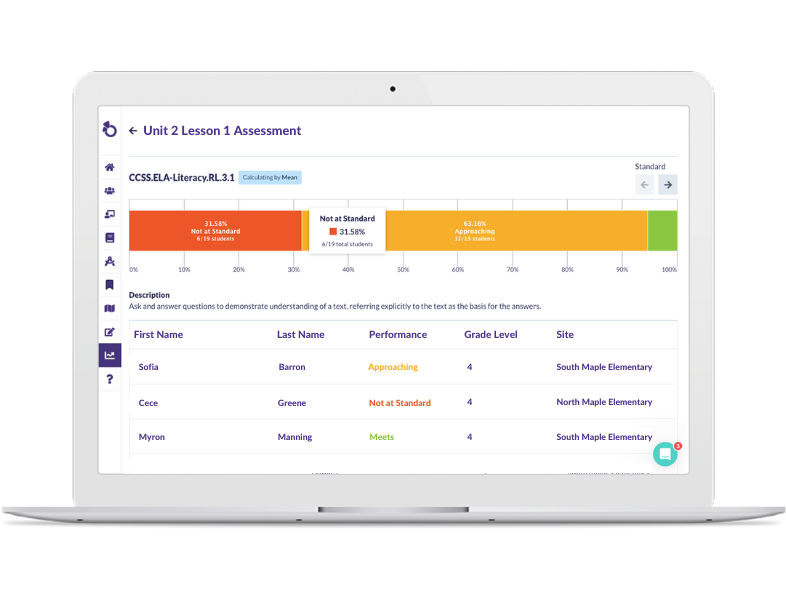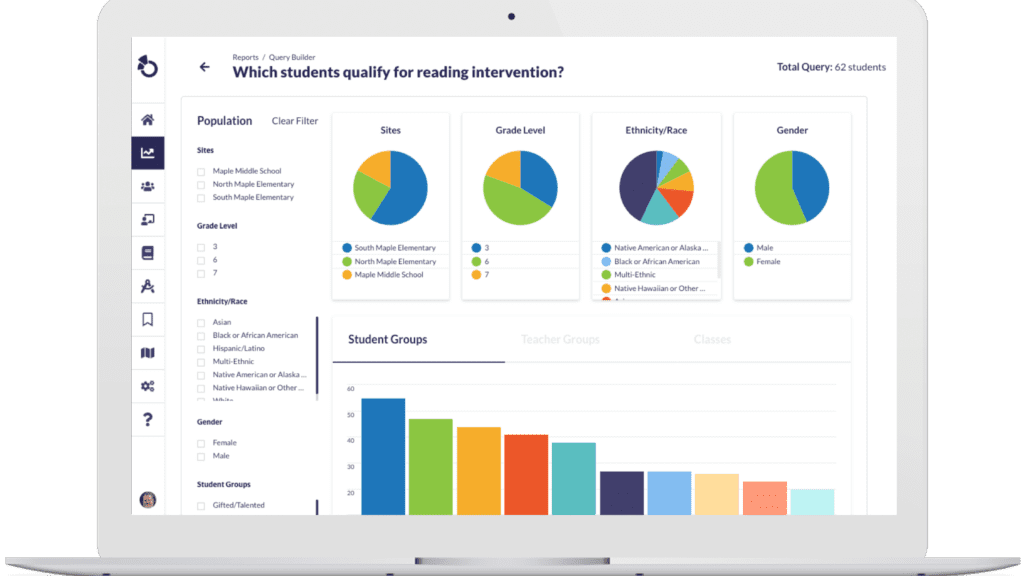Unlocking the Power of Assessment Data: A 5-Step Guide for Educators
By: David Specht

5 Steps for Harnessing Assessment Data
1. Identify the Assessments and What They Measure
The first step in effectively using assessment data is to understand the purpose and scope of each assessment. It’s important to know which standards are being measured and if the assessments provide a clear pathway to achievement for students. This includes examining whether there is scaffolding or specific achievement milestones that are integral to the assessment process. This understanding ensures that assessments serve as tools for measuring and guiding student learning and development.
2. Determine How the Assessment Aligns to the Curriculum
Ensuring that assessments are aligned with the curriculum is crucial for meaningful measurement. This step involves critically evaluating whether the assessments reflect both the content and the instructional methods used. If an assessment measures content not yet taught, or in a way that diverges from instructional strategies, it may not accurately capture students’ understanding. Alignment between curriculum and assessment is essential for deriving insights that are relevant and actionable.
3. Identify Redundancies and Gaps
Creating an efficient assessment strategy involves identifying redundancies and gaps in what is being measured. Educators should review their assessments to ensure they are not duplicating measures of the same competencies, which can lead to unnecessary testing. Similarly, identifying gaps in assessment coverage can reveal areas where additional or different evaluations are needed to fully understand student learning. This step ensures that assessment efforts are both streamlined and comprehensive.
4. Analyze Data and Make Instructional Decisions
Analyzing assessment data is central to its effective use. This involves deep diving into which standards are most challenging and which students need more support. It also prompts educators to reflect on their teaching practices and areas for growth. Through this analysis, educators can focus on ensuring content mastery and adapt their teaching to support all students, fostering an environment where every learner has the opportunity to succeed.
5. Share Results
Sharing assessment results with students is key to building a culture of continuous improvement. Discussing performance and strategies for advancement can motivate students and give them ownership of their learning journey. Celebrating progress and achievements reinforces the importance of effort and resilience. Transparency in sharing results promotes trust and encourages a collaborative educational approach.
By following these five steps to harness assessment data, educators can make informed decisions that significantly enhance student learning. This systematic approach to reviewing and acting on assessment data improves instructional planning, engages students in their educational journey, and, most importantly, leads to better educational outcomes. Student data and assessment solutions, like Otus, can help streamline this process.
Using Otus and CenterPoint to Streamline Assessment & Data-Driven Instruction
Otus has teamed up with CenterPoint Education Solutions, a mission-driven non-profit that provides schools and districts with aligned assessment solutions that transform the student learning experience. The collaboration enables users of Otus’ innovative student growth solution to access CenterPoint’s top-tier, curriculum-aligned assessments – all of which are already built in the Otus platform. This partnership equips teachers with the resources they need to shine a light on every student’s path, ensuring a more personalized and impactful educational experience. Here’s how this dynamic duo is transforming classrooms:
Instant Access to Quality Assessments
With the addition of CenterPoint’s Illustrative Math (IM) certified and EL Education-aligned interim assessments, as well as state standards assessments, Otus users now have instant access to a suite of high-quality, curriculum-aligned tools. These assessments are meticulously designed to align with both the curriculum and state standards, ensuring that educators can accurately measure student understanding and progress. The availability of these assessments on the Otus platform means that educators can now leverage precise tools to evaluate student learning, making it easier to identify areas of strength and opportunities for growth.

Educators can think deeply about student responses using features like question analysis.
Real-Time Insights
Otus excels in gathering, visualizing, and acting on student data. With the integration of CenterPoint's assessments, educators gain access to real-time, standards-aligned data reporting. This feature is crucial for analyzing student performance and understanding the effectiveness of instructional strategies. The platform's data visualization tools allow educators to quickly identify trends, patterns, and areas requiring attention, enabling them to make informed decisions that are directly tied to student outcomes.

See how students are progressing towards the learning standards measured on an assessment.
Targeted Instructional Planning
The insights gained from the comprehensive data analysis offered by Otus enable educators to engage in targeted instructional planning. By understanding where students are in their learning journey, educators can tailor their instruction to meet individual and group needs.

Use the data from an assessment to create student groups and meet students where they are in their learning.
Enhanced Student Outcomes
Ultimately, the partnership between Otus and CenterPoint is designed to enhance student outcomes. By providing educators with access to high-quality, standards-aligned assessments and powerful data analysis tools, the platform empowers them to make data-driven decisions that improve instructional quality and student engagement. The ability to personalize learning and adapt teaching strategies based on accurate, timely data means that every student has the opportunity to reach their full potential. The integration of these assessments into the Otus platform not only supports the important work of teaching and learning but also aligns with the larger mission of monitoring and fostering student achievement.
The partnership between Otus and CenterPoint Education Solutions equips educators with the necessary tools to make informed decisions, personalize learning, and guide every student confidently through their educational journey. With the right technology, educators can enhance the educational experience, enabling students to maximize their potential.
To learn more about measuring student learning with CenterPoint and Otus, request a demo.
Related Resources
Request a demo!
See exactly how Otus can help your school accelerate student growth and improve student outcomes – all while saving educators time.





